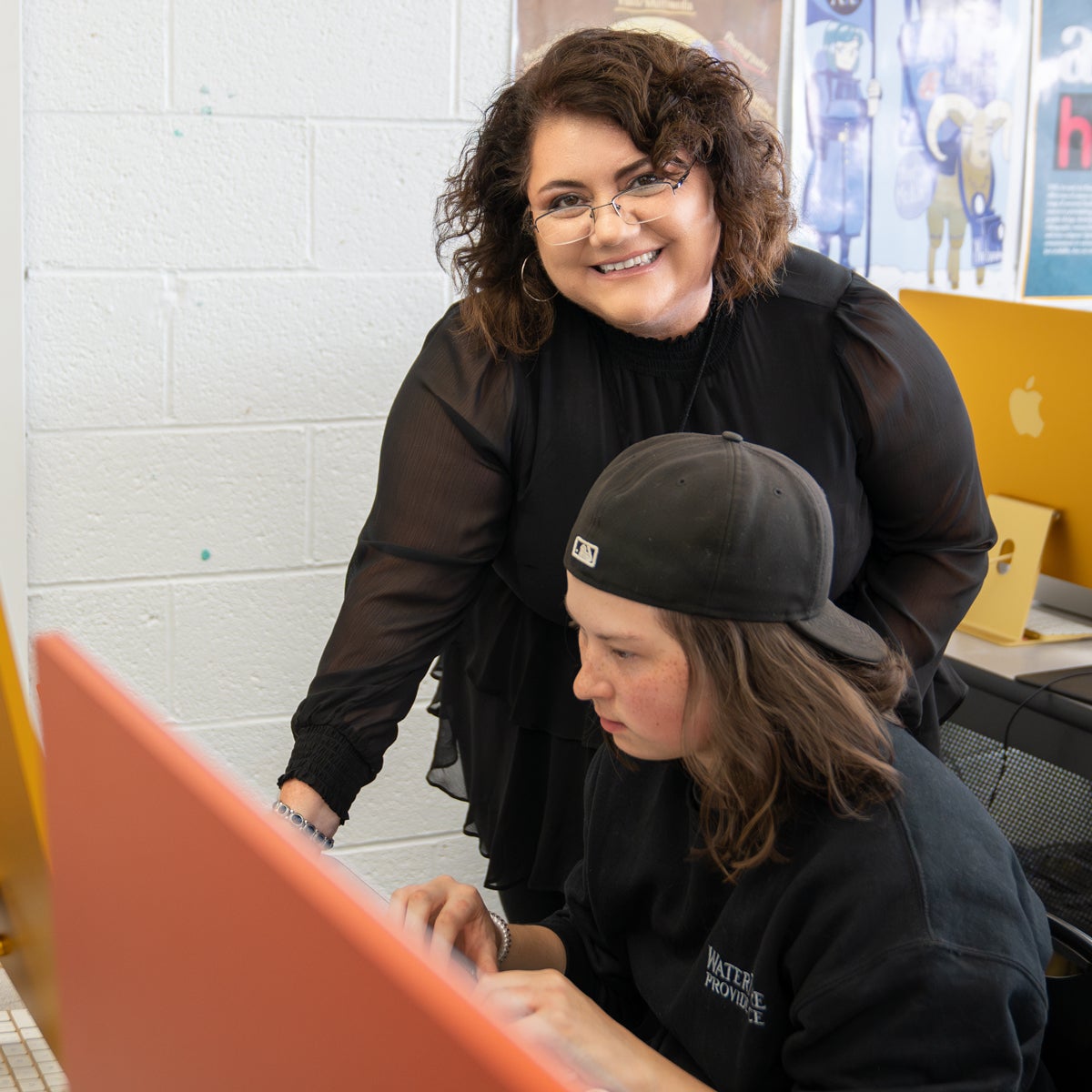Clarisa Carubin, professor of graphic design, holds a Ph.D. in Arts and Design from the University of Barcelona, Spain. She has taught at the University level in the areas of Art and Graphic Design in Argentina, Spain, and the United Arab Emirates, and she is currently a full-time faculty member here at URI. Her courses range from graphic design theory and application to typography to data visualization.
What was your pathway to URI?
It was a long path. I came from Mendoza, Argentina, the west side of the country. Originally, I started studying graphic design as an undergraduate degree. I came from a family of designers and architects. Hence, it was a normal path to follow. We decided to move to Spain, where I decided to pursue a master’s degree at the University of Barcelona. After 5 or 6 years, I moved to the UAE (United Arab Emirates) to teach applied media, typography, graphic design, and animation. Then we decided to move to the U.S., and when I arrived here, it was a natural path to continue my education and do a PhD. URI came shortly after that – I was very excited to put everything I just learned into practice.
How has teaching in different countries—Argentina, Spain, the UAE, and now the U.S.—influenced your approach to education and curriculum development in graphic design?
A lot of my experience helped me receive different cultures, different ways of thinking, and approaching problems. As designers we communicate through visual messages, and the ability to be in contact with other cultures opened a myriad of possibilities to understand how people see the world in differently and how to solve problems. We need to respect and accept that people think differently and try to be open to seeing another’s perspective. My approach was a mix. I started at higher colleges with animation and course development and saw an opportunity there. My dissertation goes into comparing that curriculum. It was always about course curriculum and development. It has always been my passion.
What skills are essential for students entering the graphic design industry today?
Curiosity is the most important skill anybody needs. Students need to ask questions because that is when you really learn. You must be able to think outside of the box; it’s important to get rid of the box, know the limits and rules, and then really get rid of them and think critically to solve complex problems and communicate.
Are there specific areas within graphic design or motion graphics that you are exploring or wish to explore in your future research?
I would like to explore ways to cover motion graphic design as a more advanced course. Motion graphics are becoming another thing with social media. It is even more important that things can move, and the interaction with the audience brings that importance; the experience is more dynamic for them. I think it will show students how to solve complex problems because life is becoming increasingly complicated in many ways. If we can teach our students to solve complex problems, they will be able to tackle them in different ways and with different perspectives.

